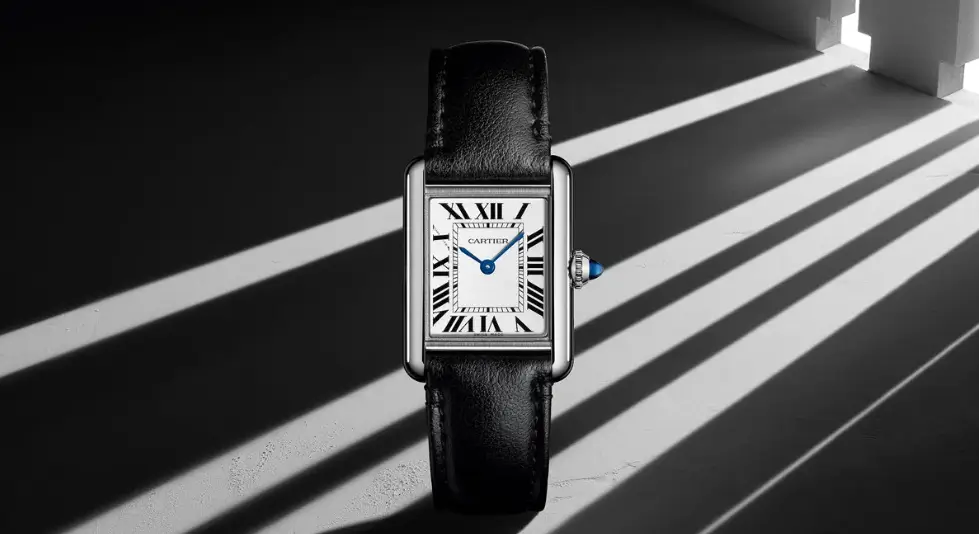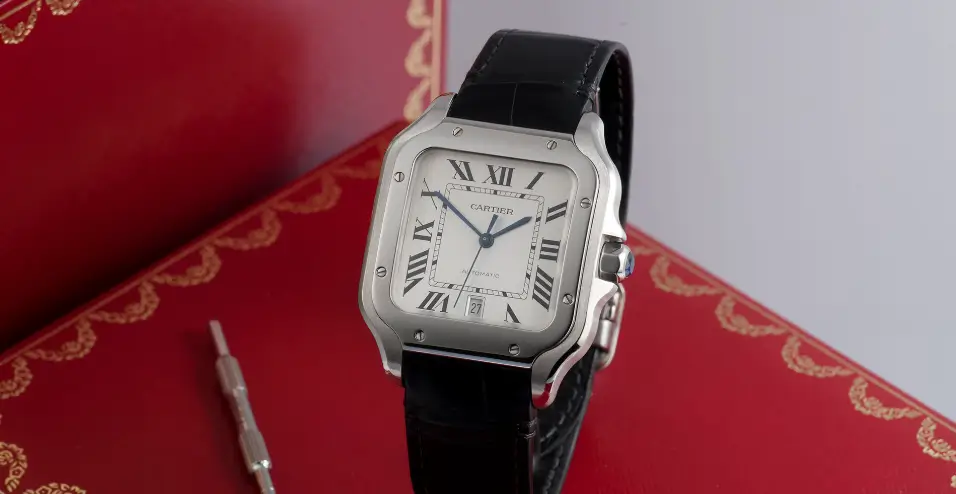Cartier Vintage Watches: The Complete Collector’s Guide
Watch Guides
2025-09-19
Introduction
Cartier vintage watches have always fascinated me. These timepieces are more than instruments to tell time—they are pieces of history, wearable art, and often, smart investments. Founded in the late 19th century as a pioneer in merging jewelry craftsmanship with precision watchmaking, Cartier created a new category of stylish wristwatches. Its vintage watches not only reflect exquisite design and mechanical mastery but also carry the stories of 20th-century culture and society. Over the years, I’ve explored, handled, and collected a variety of Cartier watches, and in this guide, I’ll share everything I’ve learned—from their iconic designs to tips for authentication, collecting, and proper care.
The History of Cartier Watches
Cartier’s watchmaking journey began in 1847, when Louis-François Cartier founded his workshop in Paris, initially focusing on luxury jewelry. Over time, Cartier evolved into a pioneering house that combined exquisite jewelry craftsmanship with precision watchmaking. A defining moment came in 1904, when Louis Cartier created the Santos for aviator Alberto Santos-Dumont. He needed a practical alternative to pocket watches while flying, and this collaboration produced what is widely considered the world’s first modern wristwatch. By 1911, the Santos was introduced to the public, setting a new standard for functionality and style in men’s watches.
In 1917, Cartier introduced the Tank, drawing inspiration from the rectangular shape of WWI Renault FT-17 tanks. Its elegant lines, Roman numerals, and blued hands captured the essence of the Art Deco movement, turning the Tank into a design icon that transcended trends. Over the decades, Cartier continued to innovate, expanding its watch collections with models like the Panthère de Cartier and Ballon Bleu de Cartier, all while experimenting with precious metals, unique case designs, and advanced movements.
From the post-WWI era, when wristwatches gained popularity as essential men’s accessories, to today, Cartier watches have consistently blended style, technical excellence, and cultural relevance. Originally a family-owned business until 1964, Cartier is now part of the Richemont Group, maintaining its status as a global symbol of luxury, elegance, and superior craftsmanship. For me, understanding this rich history is essential to appreciating the enduring appeal and collectible value of Cartier vintage watches.
Iconic Cartier Vintage Watch Collections
1.Cartier Tank

I have to start with the Cartier Tank, one of the most iconic and timeless watches ever made. Launched in 1917, its rectangular case and clean lines remain instantly recognizable. Over the years, Cartier introduced several notable variations:
- Tank Louis (1922) – Distinguished by its Roman numeral dial and vertical lugs, the Tank Louis exudes refined elegance. Early models like the Ref. 2647 from the 1920s are especially prized by collectors for their historical significance and classic proportions.
- Tank Américaine (1989 revival) – Featuring elongated lugs designed to better fit modern wrists, this version became a favorite for contemporary business wear while retaining the Tank’s signature elegance.
- Tank Française – A more modern iteration with integrated metal bracelet, blending Tank’s classic aesthetics with everyday practicality.
For me, spotting a Tank antique in excellent condition is like finding a treasure—each model carries subtle design cues that reflect its era, making it essential to understand these differences when collecting.
2.Cartier Santos

The Cartier Santos was originally created in 1904 for aviator Alberto Santos-Dumont, who needed a practical alternative to pocket watches while flying. Its square case and exposed screws immediately set it apart. Over time, Cartier expanded the Santos line to include steel, gold, and platinum versions, each with unique design elements. Vintage Santos watches, especially the early steel models, remain highly collectible and are sought after for both their historical significance and distinctive style.
3.Cartier Pasha
The Cartier Pasha has always intrigued me with its bold round case and screw-down crown cover. After its 1985 revival, Cartier added features like a rotating bezel with engraved numerals and luminescent hands, making it both stylish and practical. While less common than the Tank or Santos, vintage Pashas have a distinct charm that makes them a worthy addition to any collection.
In my experience, understanding each collection’s history, design evolution, and representative models—like the Tank Louis Ref. 2647 or early steel Santos—is key to identifying authentic vintage Cartier pieces and appreciating their value in the secondary market.
How to Identify Authentic Cartier Vintage Watches
One of the most important lessons I’ve learned in collecting Cartier vintage watches is that authentication is absolutely crucial. The market is filled with replicas, and even experienced collectors can be misled if they overlook subtle details. For instance, Cartier hallmarks have evolved over the decades: watches produced before the 1930s often feature the distinctive “C” shield mark on the case, while models from the 1950s onward display the more refined raised “Cartier” lettering. Examining the engraving on the crown is equally revealing—genuine pieces show crisp, precise letters, whereas many counterfeits use laser etching that lacks depth or character.
Movement inspection is another essential step. Cartier has historically relied on high-quality Swiss movements, often decorated with Geneva stripes or perlage on the bridges and plates. Fake watches frequently ignore these finishing details, and sometimes even refurbish old movements to appear aged, creating a false sense of authenticity. I make it a point to compare the movement’s characteristics against known authentic examples, noting the quality of finishing, font consistency, and alignment.
Whenever possible, I also verify serial numbers and provenance through Cartier’s archives. Original paperwork or certificates not only confirm authenticity but can significantly increase the watch’s value. For added confidence, I recommend consulting Cartier’s official service centers or independent experts, such as COSC-certified specialists or trusted vintage watch appraisers, who can provide professional verification. Paying attention to these details has allowed me to avoid counterfeits and confidently invest in Cartier vintage watches that are truly authentic and collectible.
Understanding Cartier Watch Materials and Movements
Vintage Cartier watches were crafted from a range of materials, and understanding these differences has been invaluable in my collecting experience. Gold cases, for instance, were typically made from 18K gold during the 1920s to 1950s, often marked with “750” or “18K” to indicate purity. Stainless steel cases were initially produced in 316L steel, with some later high-end models upgrading to 904L steel, prized for its durability and finish. Platinum, though less common, remains a hallmark of Cartier’s most luxurious vintage pieces. Each material not only affects aesthetics and wearability but also has a significant impact on value in the secondary market.
Equally important are the movements inside these watches. Cartier has historically relied on high-quality Swiss calibers, such as Valjoux and Lemania for early mechanical models, often hand-finished with Geneva stripes or perlage. Later, some limited editions incorporated in-house or COSC-certified movements, adding technical sophistication and collectible appeal. While Cartier also produced quartz models that are easier to maintain, I personally favor mechanical movements for their craftsmanship, heritage, and investment potential. By understanding both the materials and the movements, I’m better able to assess the aesthetic appeal, functionality, and long-term value of each Cartier vintage watch in my collection.
Market Value and Investment Potential
Over the years, I’ve observed that the value of Cartier vintage watches is shaped by several key factors. Rarity plays a major role—limited editions or models produced in small quantities immediately capture my attention. For example, the Tank Louis Ref. 2647 from the 1920s is highly sought after due to its scarcity and historical significance. Condition is equally critical; watches that remain in their original, unpolished state, with intact dials and cases, consistently achieve higher prices at auction. The Cartier Santos-Dumont early steel models, for instance, have seen remarkable appreciation when preserved meticulously. Provenance can also greatly influence value—a Cartier watch with documented history or notable previous ownership, such as pieces once worn by celebrities or royalty, often commands a premium.
Some examples highlight just how strong the market can be: a Tank Cintrée from the 1930s recently fetched over six figures at a major European auction, and a Santos-Dumont in 18K gold with original paperwork sold for nearly double its estimated price. From my experience, collecting Cartier vintage watches is about more than owning a beautiful timepiece—it’s about preserving history, understanding its cultural context, and potentially realizing significant long-term returns.
Caring for Your Cartier Vintage Watch
Maintaining a vintage Cartier watch is truly an art, and I’ve learned that attentive care not only preserves its value but also ensures it continues to function beautifully. Regular servicing of mechanical models every 3–5 years is essential, and I personally prioritize using Cartier’s official service centers, which guarantee original parts and expert handling. Alternatively, I also trust independent watchmakers who hold recognized certifications, such as GPHG, for specialized maintenance.
Different materials require tailored care. Platinum cases, for example, need periodic checks for signs of oxidation, and I recommend gently polishing them once a year with a professional-grade cloth. Mother-of-pearl dials demand special attention; I always store these watches away from direct sunlight to prevent fading and discoloration. Proper storage in a soft-lined watch box or safe, away from extreme temperatures and humidity, is another key step. I also avoid wearing vintage pieces during activities that risk scratches, shocks, or water exposure.
Caring for a vintage Cartier watch is a long-term commitment, but the reward—owning a timepiece that can be enjoyed today and passed down for generations—is more than worth the effort.
Where to Buy Cartier Vintage Watches
Finding a trusted source is vital. Over the years, I’ve relied on:
- Reputable Dealers: Specialized vintage watch boutiques and authorized resellers.
- Auction Houses: Christie’s, Sotheby’s, and Phillips often offer rare Cartier models.
- Online Marketplaces: Platforms like Chrono24 and Iplaywatch dedicated collector forums—but I always verify authenticity personally.
Being patient and cautious ensures that each purchase is both safe and rewarding.
Conclusion
In my journey as a collector, I’ve discovered that Cartier vintage watches are more than just timekeepers—they are stories, artistry, and history you can wear. From understanding their origins to identifying authentic pieces and maintaining them, each step enriches the collector’s experience. Whether you’re looking to invest, expand your collection, or simply admire their timeless beauty, Cartier vintage watches offer a world of fascination and elegance.
FAQ
Are vintage Cartier watches worth it?
Yes. They combine history, iconic design, and potential investment value.
Are Cartier watches worth collecting?
Absolutely. Iconic models like Tank, Santos, and Pasha are highly collectible.
Which vintage Cartier models are most popular?
Tank Louis, early steel Santos-Dumont, and limited-edition Pasha models.
Which Cartier watch holds its value?
Rare, limited editions and historically significant Tanks and Santos watches retain or increase value over time.
How to verify authenticity?
Check hallmarks, movement finishing, serial numbers, and provenance; consult Cartier or certified experts if needed.
How to care for them?
Regular servicing, proper storage, and careful handling, with extra care for platinum or mother-of-pearl pieces.
Where to buy?
Trusted vintage dealers, reputable auctions, and verified online platforms like Chrono24,Iplaywatch.



